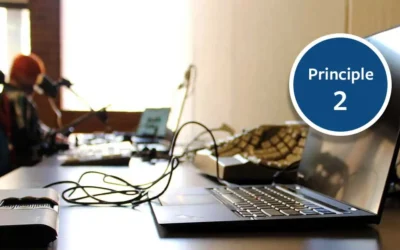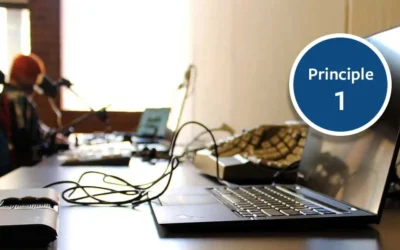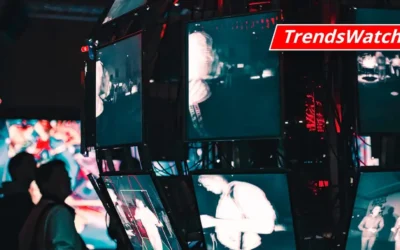The Pros and Cons of Sticking with an Ill-Fitting Museum CMS

Rachael Cristine Woody
We’ve all been there—stuck using a tool not quite fit for purpose and yet it’s the only tool you have. All tools live on a continuum. From one side of the continuum to the other there may be incremental differences.
As you progress along the continuum there’s a slight increase or decrease in function or quality with (usually) the parallel increase or decrease in price. Excellent tools of good quality tend to last the longest, can do their job with the best efficiency, and are considered a monetary investment that pays off over time. Free or cheap tools are on the opposite end of the continuum and tend to be limited in function, take more time to use, break more easily, etc. A museum Collections Management System (CMS) is a tool and it shares this tool “continuum” premise. This post will break down the pros and cons of an ill-fitting museum CMS so that you have the talking points you need to make the case for a better museum CMS.
Pros of an Ill-Fitting Museum CMS
The following are “pros” of sticking with a CMS that just isn’t a good fit for your museum collection:
- It’s likely an “affordable” annual rate already covered by the museum budget.
- It’s “known” to staff and no new learning period is needed.
- It’s already in place and no new effort will be needed to configure the system or migrate your collection data from one system to the other.
Cons of an Ill-Fitting Museum CMS
The “cons” of an ill-fitting CMS can be one or more of the following:
- If the CMS can’t effectively gather collection information, project workflows, and collection use, then much of that analog labor falls on staff to complete.
- Object information can’t be validated, automatically pulled, nor shared.
- Only small or simple tasks will be possible and collection activities will be limited.
- Collection data runs the risk of being lost or inaccurate, and no automation is available to support museum staff.
- Some tasks and core museum functionality may not be supported by the CMS
- For functionality that is in place, if it’s not a good fit then it’s likely the tasks will take longer.
Pros of Using the “Right” CMS Tool:
What about the opposite end of the continuum? What would it look like to invest in an excellent CMS tool that’s a great fit for your museum collection? I’ve included talking points so that you can make that case. With the right CMS tool, the platform will be able to aid your work with the following functionality:
- Highlighting items in need of treatment before the next exhibit by checking conservation reports.
- Demonstrating how often collection objects are on display, or not, by chronicling exhibition history; this can inform exhibit creation.
- Proving collection use by tracking statistics of in-person use and digital viewership. This information can be used to determine visitor traffic or demand, which can translate into how externally valued the objects are and where more resources should be allocated.
- Addressing legal or ethical questions that arise when evaluating poor past practices, with clearly documented object provenance.
- Decreasing lost or misplaced objects by tracking items that are leaving or returning to the museum through exhibition loans or traveling exhibits.
- Supporting enjoyment, research, or education initiatives with tools that allow the public to create a self-curated object list, share objects on social media, or download images of their favorite objects.
Conclusion
Making sure we have the right tools for our trade should be our first priority each and every day. Our investment in these tools and our intentionality in selecting them will be rewarded when we put our tools to work. If any of your tools do not quite fit, I encourage you to take the time needed and advocate for the tools you need to get your job done right.
Additional Reading
I’ve collected the following posts to offer as additional reading. These posts help to build on today’s topic and offer next steps or further detail to help support you in your work.
CMS Data Can Prove the Value of Collection Work
The CMS: What’s Essential, What’s Hackable, and What Does It Cost?
Museum Challenges and How a CMS Can Help – Part 1
Museum Challenges and How a CMS Can Help – Part 2
Museum Opportunities and How a Collections Management System Can Help

Rachael Cristine Woody
Never miss another post. Subscribe today!
Similar Posts
Museum Collections Online with Accessibility Principle 2: Operable
Compliance with WCAG Version 2.1 Principle 2: Operable
Museum Collections Online with Accessibility Principle 1: Perceivable
Compliance with WCAG Version 2.1 Principle 1: Perceivable, affecting information published from museum CMS to an online portal; expert guidance
Accessibility Standards for Museum Collections Online
A museum’s compliance with the ADA Title II 2024 update has benefits for its online content and for the museum’s community of users.
Museum TrendsWatch 2024: Digital Twins and Doom Loops & Combatting the Loneliness Crisis
Digital Twins is the construction of a digital surrogate for a person, place, or thing—one of several new concepts and trends in the museum sector.




Leave a Comment
Comments are reviewed and must adhere to our comments policy.
0 Comments